A large number of businesses are migrating to VoIP technology because of its low cost resulting in cost reduction of up to 80%. But, the greatest concern for a business using VoIP is ensuring uptime and quality. Jitter, latency and packet loss cause a drop in the quality of the voice communication which brings us to the requirement of monitoring VoIP to maintain the quality of the voice communications.
NetFlow Analyzer has a VoIP monitoring module to help check the capability of a link to carry Voice traffic and about this, we have discussed in this blog. This topic is about IP Groups which will help monitor the bandwidth used by VoIP traffic.
The scenario is a network with three sites, A, B and C, where each site is connected through a T1 line to carry both data and voice traffic as below:

The network admin was alerted about the poor voice call quality and this was also verified using the VoIP reporting module in NetFlow Analyzer. The enterprise does not want to invest on a dedicated voice link at this point unless they are sure that switching to VoIP has really saved money and also because the infrastructure is going to be expanded soon. Now, to handle the problem at hand. The admin wants to find out the voice traffic utilization between sites which is passing through the T1 links. He suspects that voice quality between the sites is very bad because of bandwidth utilization by non business applications. He also wants to fine tune the network after finding out the bandwidth utilized by Voice traffic.
An Overview about Between Sites IP group :
The Site to Site traffic monitoring option in IP Groups lets you monitor traffic between two specific sites, which are created based on IP Address or IP Network. This feature helps you understand the network traffic behavior between any two user defined sites. You can get the following details in an IP Group created wit Site to Site option :
* Traffic IN and OUT
* Applications used
* Source and Destination
* Conversations IN and OUT
* DSCP and ToS Values
Voice Traffic monitoring between each sites :
All the T1 links are monitored by a NetFlow Analyzer installation running at the main office. The admin drill downs to the interface and checks the application utilization. It was seen that the Voice traffic utilization is very much less than the normal traffic on the T1 links and could see some non business critical applications. He wants to find out exact bandwidth utilization of Voice traffic between each sites (A to B and B to C). For this, the best option is the Site to Site traffic monitoring via IP Groups.
The network admin creates the IP group with ‘Between Sites’ option placing the IP network of the IP phones in Site A under ‘FROM’ and the IP network of IP phones in the Site B under the ‘TO’ category. A similar IP Group for Site B to C is also created.
He observes the traffic pattern on the each created IP group and found the traffic utilization of Voice traffic is under utilized on the T1 links.
Explidate Forwarding :
After finding out the actual utilization of the Voice traffic. He now implements QoS policing with high priority marking on the each T1 links to prioritize voice traffic over other normal traffic thus increasing the voice quality to expected standards.
class-map match-any VOIP-SIGNAL
match ip dscp cs5
match ip precedence 4
match ip precedence 3
class-map match-any VOIP-RTP
match ip dscp ef
match ip precedence 5
!
!
policy-map QOS-Policy
class VOIP-SIGNAL
priority percent 5
class VOIP-RTP
priority percent 70
class class-default
fair-queue
random-detect
!
interface Serial0/0/0
service-policy output QOS-Policy
The between sites IP group can also be used to verify the effect of QoS policy on traffic behavior. He can also check whether QoS marking for voice traffic is been marked correctly.
NetFlow Analyzer also supports Cisco CBQoS reporting and thus reports on the QoS policies that were deployed to mark voice traffic was verified. The CBQoS report in NetFlow Analyzer will show the pre and post-policy traffic usage along with any drop in each traffic class. In short, you can use NetFlow Analyzer for QoS policy validation.
Thanks and Regards
Praveen Kumar
Download | Interactive Demo | Product overview video | Twitter | Customers|Bandwidth Monitoring | Network Security | CBQoSMonitoring |

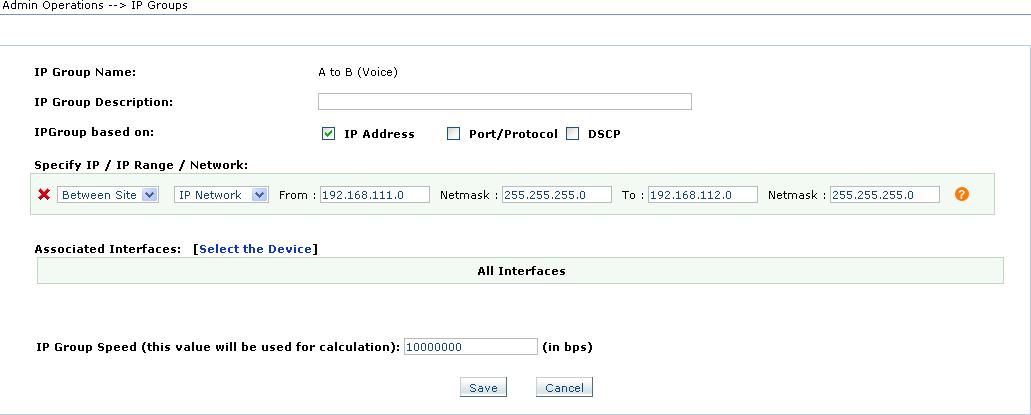
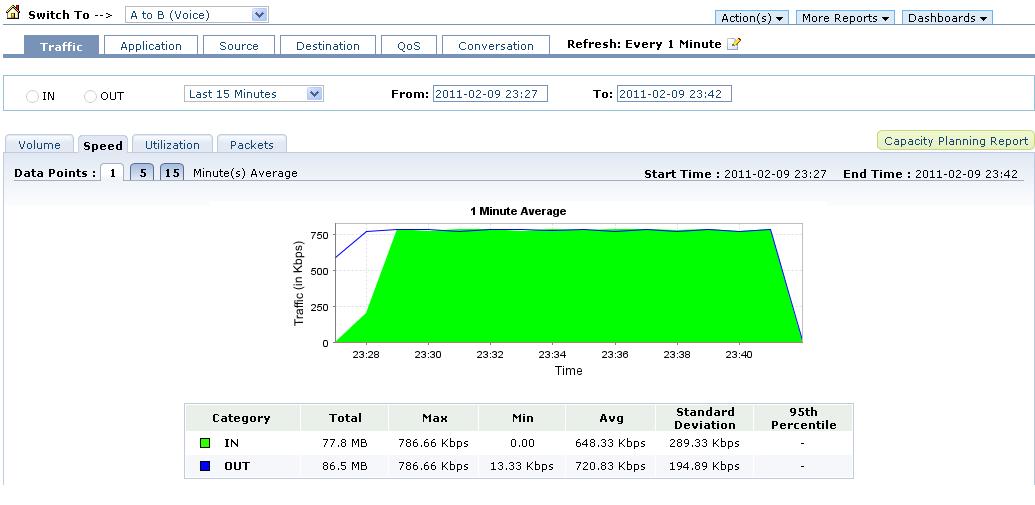
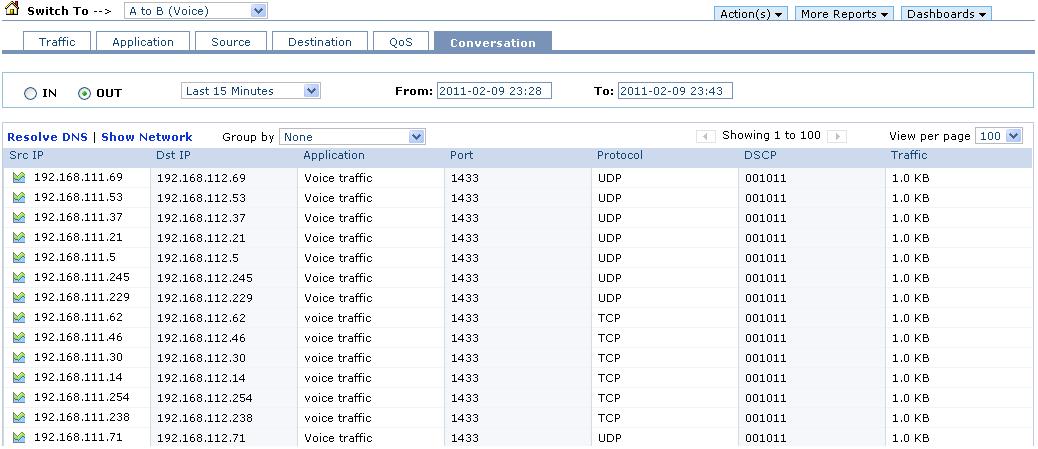
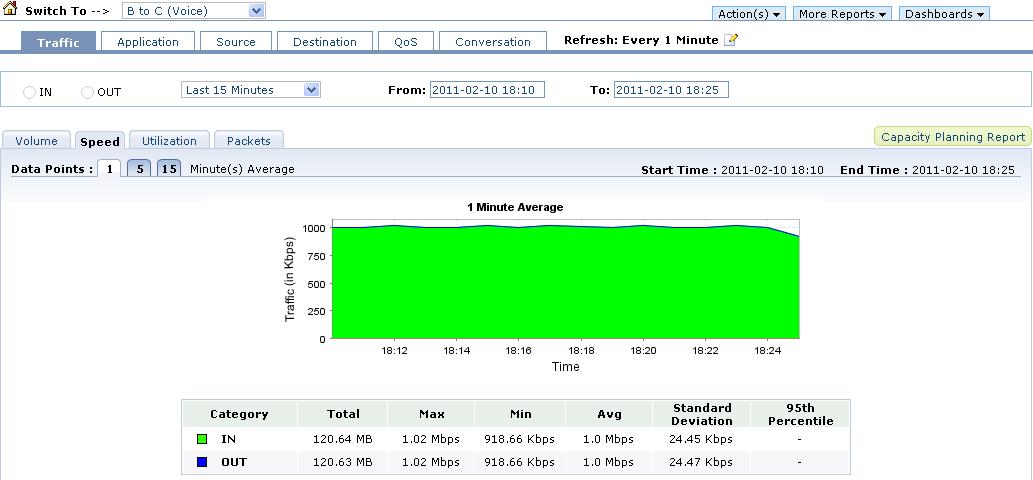
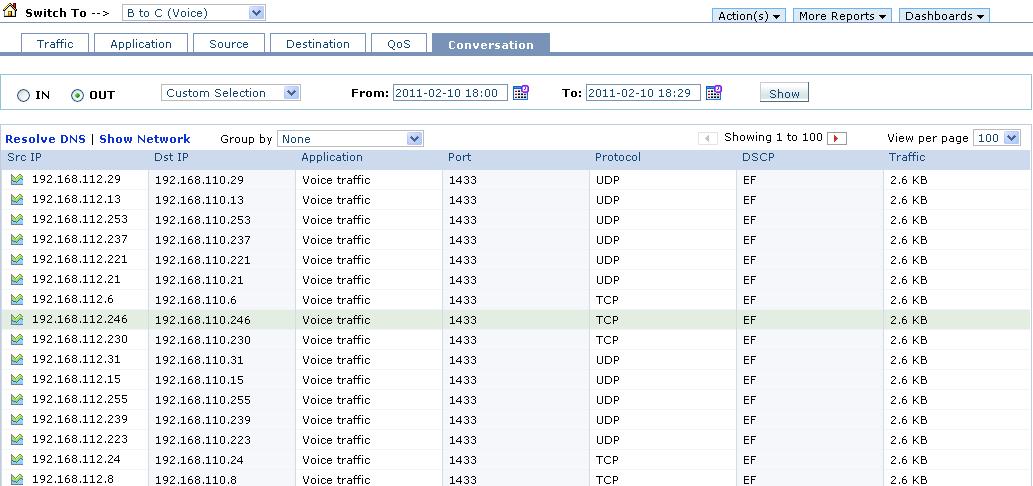

Good information about VOIP. Does IPV6 has any effect on existing VOIP solutions?
Custom Exceptions and Serialization in Java
Good information about VOIP. Does IPV6 has any effect on existing VOIP solutions?
Custom Exceptions and Serialization in Java
Very nice and informative article. explained with actual scenario,
Great post.Great way of explaining via picking one scenario.I think this is one of the best article which describes VOIP traffic in such detailed.Thanks for such an informative post.
Thanks for this detailed article dude, never know so much of VOIP though using it .
Javin
Why String is immutable in Java